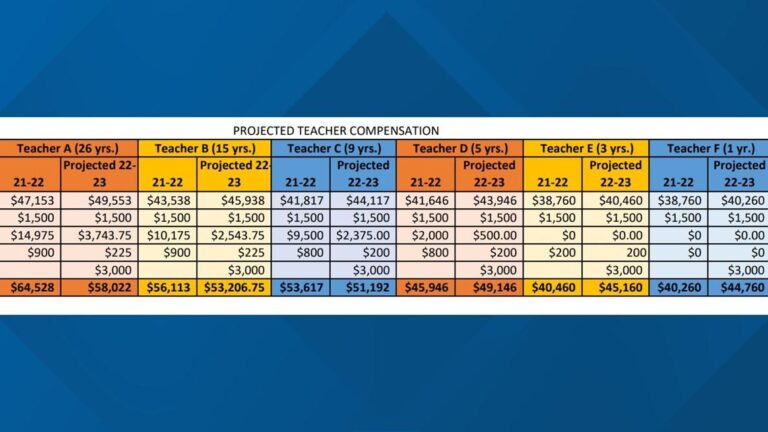The Phoenix school district has announced plans to cut several positions in response to declining student enrollment and reduced funding. Officials cited budget constraints and shifting demographics as key factors driving the decision, which aims to align staffing levels with current enrollment trends. The move comes amid ongoing financial challenges facing many school districts statewide, raising concerns about the potential impact on educational services and community resources.
Phoenix School District Faces Staff Reductions Amid Falling Student Numbers
Facing a sustained decline in student enrollment, Phoenix School District officials have announced a strategic reduction in staff to meet tighter budget constraints. According to district representatives, the decision comes after a comprehensive review of enrollment trends and financial forecasts, which revealed a consistent drop in student numbers over the past three years. This decrease has directly impacted funding allocations, primarily sourced from state and local budgets that correlate with student headcounts.
The planned reductions will affect various roles across the district, including administrative staff, classroom aides, and support personnel. Officials emphasize that these cuts are designed to minimize disruption to classroom instruction while responsibly managing resources. Key focus areas include:
- Consolidation of under-enrolled programs
- Resource reallocation to high-demand schools
- Voluntary retirement incentives offered to eligible staff
Below is an overview of the projected staffing changes:
| Category | Current Staff | Positions to be Cut | Remaining Staff |
|---|---|---|---|
| Teachers | 450 | 30 | 420 |
| Support Staff | 200 | 25 | 175 |
| Administrative | 50 | 10 | 40 |
Financial Strain Drives Funding Challenges Impacting Classroom Resources
Budgetary constraints linked to declining enrollment have forced the Phoenix school district to grapple with significant financial hurdles. These challenges are not isolated to staffing reductions but extend deeply into the quality and availability of classroom resources. Educators are facing the difficult reality of teaching with fewer supplies, outdated materials, and limited access to technology, all of which undermine efforts to provide a comprehensive educational experience.
Key impacts on classroom resources include:
- Reduced textbook purchases resulting in shared materials across multiple classes.
- Limited funding for extracurricular and enrichment programs that play a crucial role in student development.
- Deferred upgrades to classroom technology, hindering digital learning initiatives.
| Resource | Previous Budget | Current Budget | Impact |
|---|---|---|---|
| Textbooks | $2 million | $1.2 million | 40% reduction, shared usage |
| Technology | $1.5 million | $900,000 | Delayed upgrades |
| Extracurricular Funds | $800,000 | $400,000 | 50% cutbacks |
Community Response Calls for Strategic Reinvestment and Support Measures
In the wake of the announced job cuts, community leaders and parents have voiced urgent concerns about the long-term impact these reductions will have on educational quality and student support services. Many emphasize that strategic reinvestment is critical to stabilize the district’s future and prevent further declines in enrollment. Advocates are calling for targeted funding allocations that prioritize classroom resources, mental health programs, and extracurricular opportunities to maintain comprehensive student development amid tighter budgets.
Key community recommendations include:
- Increased state and local funding to offset enrollment-related budget losses.
- Implementation of proactive retention programs aimed at keeping families engaged.
- Expansion of partnerships with local organizations to supplement district services.
- Enhanced transparency and communication between district officials and stakeholders.
| Support Measure | Expected Impact |
|---|---|
| Expanded Counseling Services | Improved student well-being and academic performance |
| Grant-Funded Tutoring Programs | Reduced achievement gaps across demographics |
| Community Volunteer Initiatives | Enhanced family engagement and local support |
Experts Recommend Prioritizing Student-Centered Solutions to Mitigate Impact
Educational experts emphasize that addressing the challenges posed by declining enrollment and diminished funding should focus on student-centered strategies to safeguard quality learning experiences. Prioritizing interventions tailored to students’ diverse needs can help prevent the negative ripple effects of staff reductions. This includes enhancing personalized learning, expanding counseling services, and ensuring that resource allocation remains aligned with the goal of supporting every child’s academic and social-emotional growth.
Among the recommended approaches:
- Investing in technology integration to facilitate remote and hybrid learning models;
- Strengthening community partnerships to provide additional educational and social support;
- Flexible scheduling and multi-grade classrooms to maximize teaching capacity;
- Focused professional development that equips remaining staff to address widening student needs effectively.
| Strategy | Expected Benefit |
|---|---|
| Personalized Learning Plans | Improved student engagement and outcomes |
| Enhanced Counseling Services | Better social-emotional support |
| Community Partnership Programs | Expanded access to resources |
| Professional Development | Higher teacher efficacy |
In Conclusion
As the Phoenix school district moves forward with its plans to reduce staff amid declining enrollment and funding challenges, the impact on students, educators, and the broader community remains a significant concern. District officials emphasize their commitment to maintaining educational quality despite these difficult decisions. Stakeholders will continue to watch closely as the situation develops, hoping for solutions that support both fiscal responsibility and student success.







